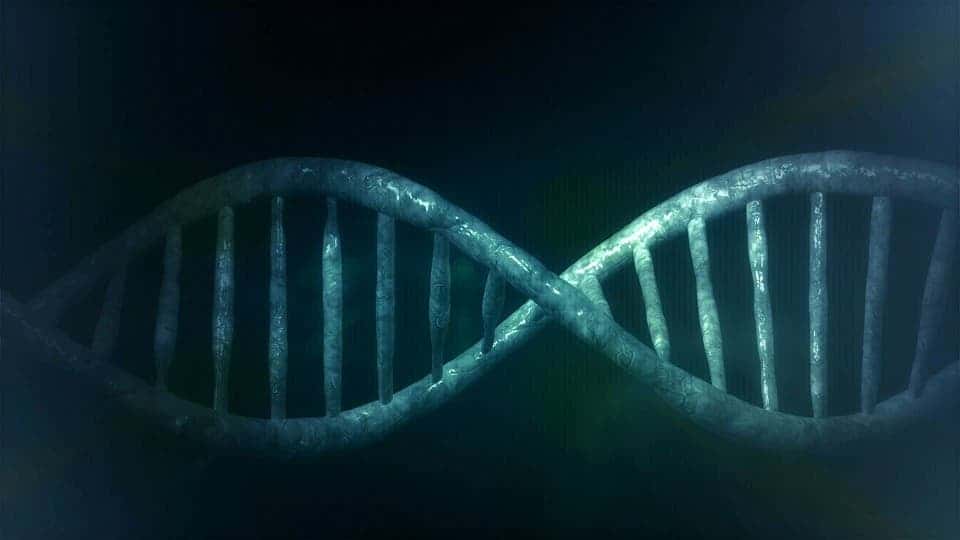A new study could finally explain why our cells rely on DNA, and not its molecular relative RNA, to store and pass on genetic data. The findings show that RNA breaks apart when it tries to incorporate changes — such as chemical damage to the molecule — while DNA can twist and bend its shape to allow for changes.

The most important thing for any living thing on Earth is to pass on its genes to offspring. Life everywhere feeds, fights and flees all in the hopes that it can eventually bring about more life in its image. But all that effort would be for nothing if genetic information couldn’t be safely stored for when it’s needed. Two molecules are responsible for carrying this information — RNA, which is a simpler single-strand molecule, and DNA which is a more complex double-strand molecule.
But up to now no one really knew why most cells favor DNA to store this genetic data over RNA. But a new study lead by Hashim Al-Hashimi from the Duke University School of Medicine might have found the answer: DNA can accommodate damage in its structure which would cause RNA to break down.
“For something as fundamental as the double helix, it is amazing that we are discovering these basic properties so late in the game,” said lead researcher .
“We need to continue to zoom in to obtain a deeper understanding regarding these basic molecules of life.”
You’re probably familiar with the double-helix model of DNA. When they first proposed it in 1953, Watson and Crick predicted how the base pairs ( A&T. C&G ) bind to form up the whole. Two strands of DNA line up and link by bonding these pairs, and end up looking kind of like a ladder with the bonds being the rungs.
So these bonds were called Watson-Crick base pairs. But researchers struggled to find evidence that the pairs were binding in the way Watson and Crick predicted. Then in 1959, biochemist Karst Hoogsteen took a picture of an A–T base pair, finding a more skewed geometry than expected, with one base rotated 180 degrees relative to the other — and these were called Hoogsteen pairs. In more recent times, researchers have observed both Watson-Crick and Hoogsteen base pairs in images of DNA.
Al-Hashimi and his team stumbled onto something five years ago that no one has ever observed before: DNA pairs that shift back and forth between Watson-Crick and Hoogsteen bonds. They found that DNA employs Hoogsteen bonds when there’s a protein bond to a DNA site – or the bases suffered chemical damage. Once the damage is fixed or the protein is released, the DNA goes back to Watson-Crick bonds. The discovery was big in itself, but now the team has shown that RNA doesn’t have the ability. This could explain why DNA forms the blueprint — it can absorb chemical changes and repair damage, RNA becomes too stiff and falls apart.
“In DNA this modification is a form of damage, and it can readily be absorbed by flipping the base and forming a Hoogsteen base pair. In contrast, the same modification severely disrupts the double helical structure of RNA,” said one of the team, Huiqing Zhou.
“The finding will likely rewrite textbook coverage of the difference between the two purveyors of genetic information, DNA and RNA,” said a Duke University press release.

Image credits Huiqing Zhou.
The team figured this out by using RNA and DNA molecules to create double-helices, then observed how their base pairs form bonds using advanced imaging techniques. At any one time, around 1 percent of DNA bases were shifting into Hoogsteen pairs, they found. The RNA strands however didn’t do the same.
They tested RNA double-helices under a host of conditions, but couldn’t determine them to naturally form Hoogsteen pairs. When they forced the molecules to form such pairs, the RNA strands fell apart completely. This happens because RNA double-helices are more tightly packed than DNA, and can’t change direction without hitting something or shifting atoms around, which makes the structure critically unstable.
“There is an amazing complexity built into these simple beautiful structures, whole new layers or dimensions that we have been blinded to because we didn’t have the tools to see them, until now,” said Al-Hashimi.
Further research is needed to determine if DNA’s flexibility compared to RNA is what lead to it becoming the go-to molecule for storing genetic data, but if confirmed, it could help us understand why life on Earth evolved into what we see today.
The full paper, “Scientists have just uncovered a major difference between DNA and RNA” has been published in the journal Nature Structural & Molecular Biology.


